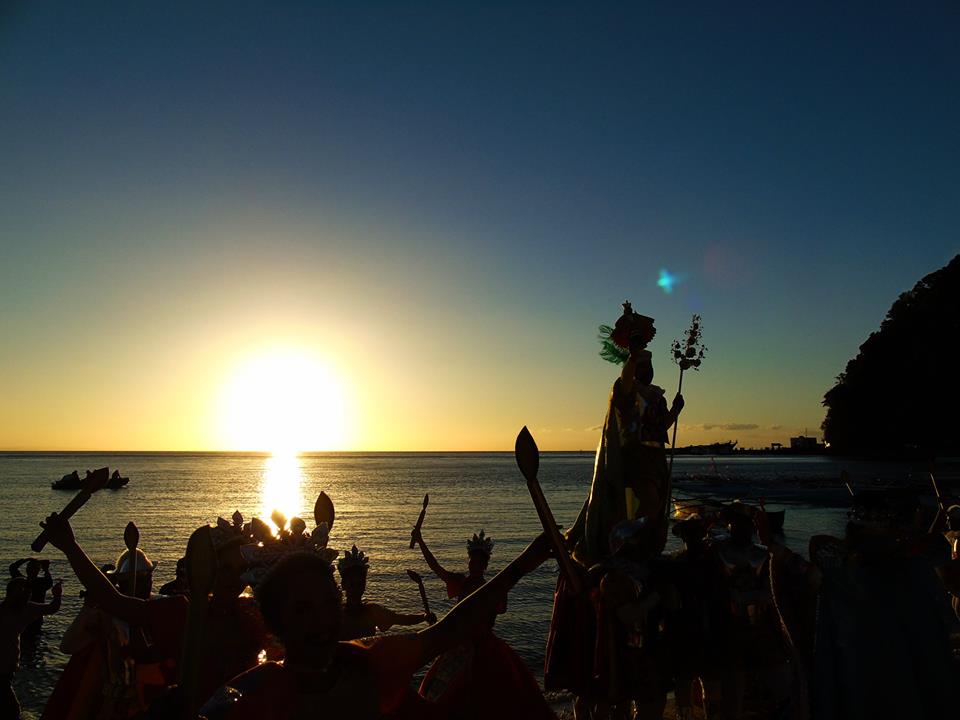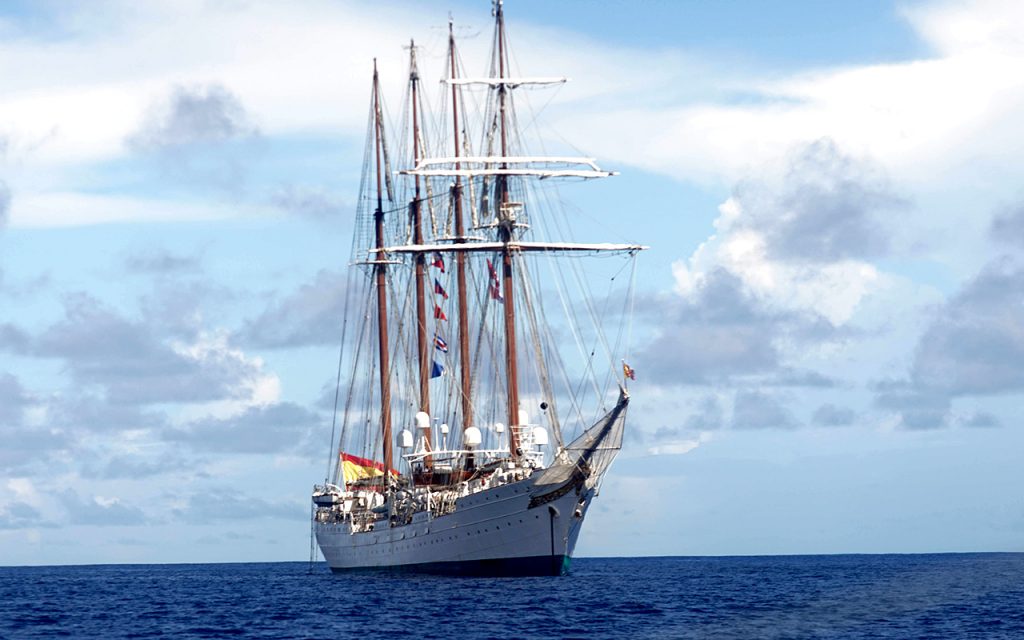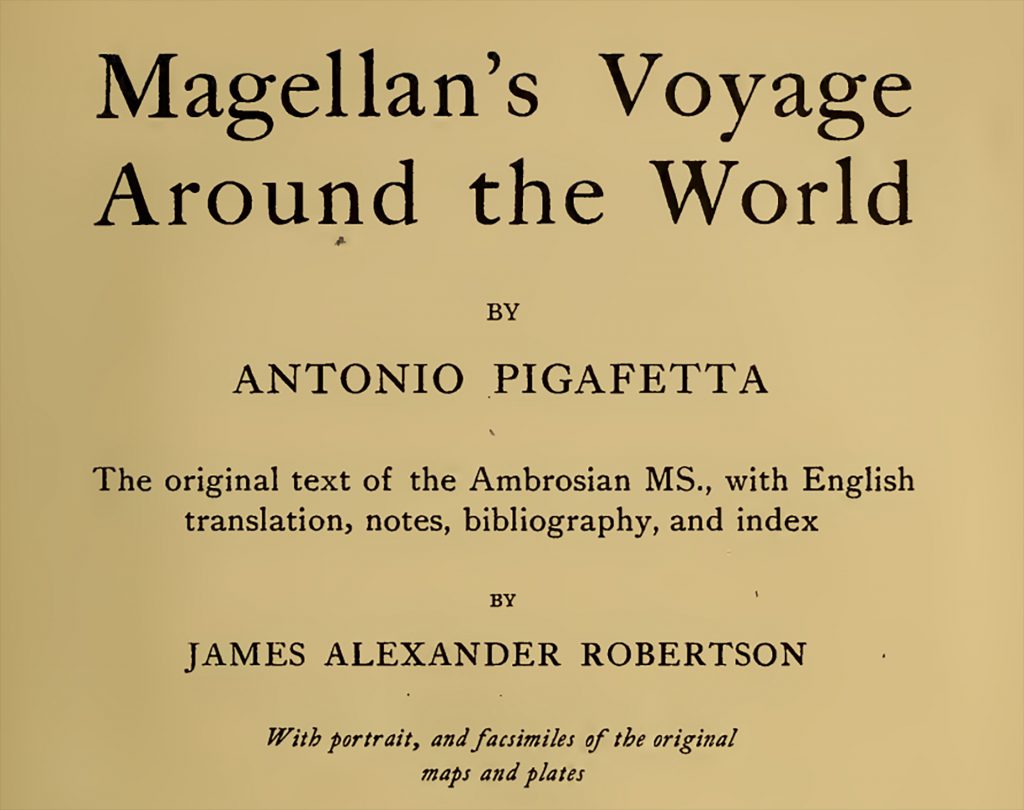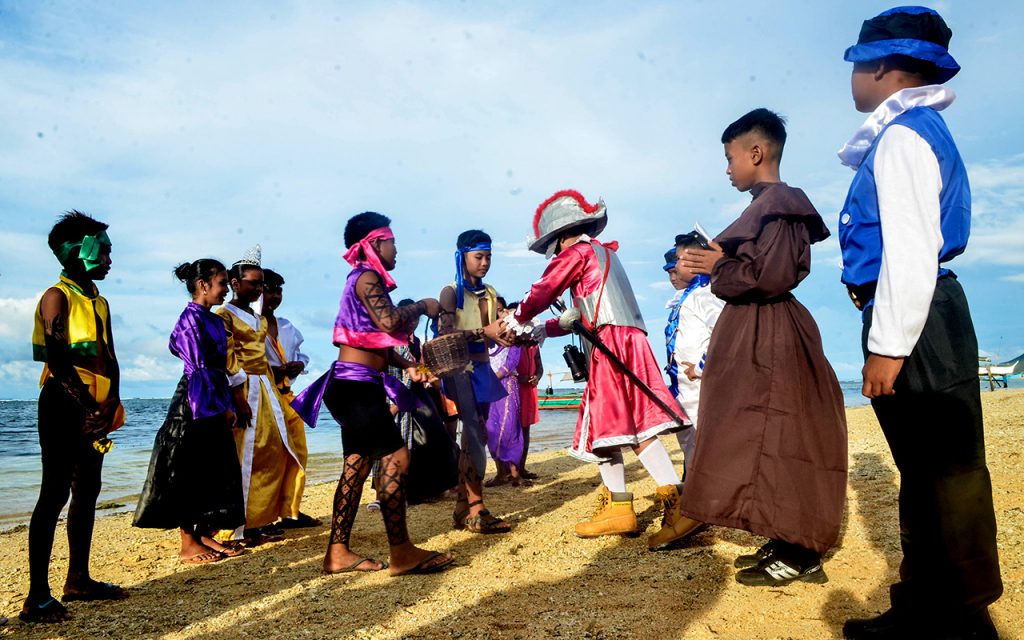
This article is the first of three parts
Two-hundred-seventy-strong Spanish crew onboard an armed fleet of five Spanish expeditionary ships. A Sumatran slave-interpreter. One Portuguese explorer with the rank of captain-general. One Italian chronicler of what was probably the bravest voyage ever to be launched in maritime history: the crossing of the Pacific leading to the first circumnavigation of the globe.
Call it a multinational endeavor, touted as the single most spellbinding achievement in the annals of exploration, but with a bit of a twist: it was the Spanish king, the young Carlos I, who foot the bill.
The launching of the expedition on August 10, 1519, proved monumental, but one fraught with troubles from the start. The flagship Trinidad, together with four other ships—the Victoria, San Antonio, Concepcion, and Santiago—left the port of Seville in Spain and hoisted their sails for an adventure that was to push them across stormy seas, dangerous straits, days of eating spoiled food, and strange and uncharted regions populated by cannibals, giants, robbers, painted heathens, exotic beasts, and cultures as odd as they were mesmerizing to the Europeans, an almost endless supply of gold, and a fate they never saw coming.
Shortly after leaving the port, the ships faced 40 days of rains and weather so inclement, it forced the crew to drop anchor at Sanlúcar de Barrameda located at the mouth of the Guadalquivir River in Southern Spain, somewhere off the coast of the Gulf of Cádiz until the waves had calmed down. There they stayed for five weeks before setting out to Brazil.
Thereafter they passed through what is now called Magellan Strait, a 350-mile channel fraught with dangers and extremely cold weather, after which the open grandeur of the Pacific Ocean.
We all know the story. The crew, largely Spanish, had difficulty remaining loyal to Ferdinand Magellan who was Portuguese. Early in the voyage, the four ships and their crew staged a mutiny against Magellan which led to the death of one of the mutineers, and eventually the bolting of San Antonio from the fleet to head back to Spain.
By the time the remaining ships reached the Pacific Ocean through the Magellan Strait, their supplies ran empty, leaving many of the crew members sick and well-nigh in the throes of death. Only after they reached Samar that Ferdinand Magellan had been able to care for the crew by feeding them coconut meat and juice brought to them by the local chieftain.
After the first Mass, we all know their luck began to wane. Defying an order from the King of Spain to hold his course to the Spice Islands, Magellan chose to stand between two warring chieftains. Deciding he would side with the Christian chieftain and help him bring the defiant datu to his knees, Magellan faced Cilapulapu in battle on April 27, 1521.

Sufficient for this piece are the words of De La Salle University historian Jose Victor Torres, whom I consulted on the matter: “I believed that Magellan’s death came about because he got himself involved in a fight between two datus. If he didn’t, he would’ve probably still lived.” Magellan was struck by a poisoned arrow and later killed in battle. Whether that was by Cilapulapu’s hands or another remains untold.
I had spent the weekend reading the account of Italian scholar Antonio Pigafetta of the voyage of Portuguese explorer Ferdinand Magellan. Thanks to public historian Michael Charleston “Xiao” B. Chua, I was able to get my hands on a digital copy of Magellan’s Voyage Around the World translated by James Alexander Robertson (1906). It is touted as the most reliable of all the firsthand accounts of the voyage.
Notwithstanding today’s debate, whether the Filipino nation should celebrate the arrival of Catholicism 500 years ago, as a Filipino journalist today, I am more curious as to who or what we were at the time of Magellan’s arrival.
Were we the “savages” and “barbarians” many foreigners, even Filipinos, thought we were at the time, holed up in our own little tribal world sans any idea of places other than our own? Or were we a thriving, sophisticated society with our own laws, political structure, sense of the arts, spiritual beliefs, trading partners, wealth, and social and economic know-how?
In my reading of Pigafetta, the Italian scholar seemed to have a pretty good idea who Magellan was dealing with during the expeditionary force’s landing in Samar on March 16, 1521.

In Pigafetta’s account, he described the people as welcoming and hospitable, Magellan even “seeing that they were reasonable men.” These were very different from all the other natives they had encountered during the voyage. The indios knew how to dress up for the occasion, and were “ornately adorned” when meeting foreign guests. They, too, conversed in understandable hand signs and were generous with their food and liquor.
“We took great pleasure with them, for they were very pleasant and conversable,” Pigafetta wrote about the people of Humunu (Homonhon) of Eastern Samar.
“Their seignior was an old man who was painted [i.e. tattooed]. He wore two gold earrings [schione] in his ears, and the others many gold armlets on their arms and kerchiefs about their heads […] There are people living near that island who have holes in their ears so large that they can pass their arms through them. Those people are caphri, that is to say, heathen. They go naked, with a cloth woven from the bark of a tree about their privies, except some of the chiefs who wear cotton cloth embroidered with silk at the ends by means of a needle. They are dark, fat, and painted. They anoint themselves with coconut and with beneseed oil, as a protection against sun and wind. They have very black hair that falls to the waist, and use daggers, knives, and spears ornamented with gold, large shields, fascines, javelins, and fishing nets that resemble rizali; and their boats are like ours.”
In one of Magellan’s encounters with a couple of chieftains in nearby islands, Pigafetta noticed that “in those districts, the kings know more languages than the other people.”
Pigafetta was, in fact, thrilled at the prospect of seeing a “balanghai,” a large boat made of wooden planks and not a vessel carved out of a trunk of a tree. During one of several fellowship dinners hosted by one of the chieftains, Pigafetta wrote: “The king had a plate of pork brought in and a large jar filled with wine.”
The chieftains themselves stood no less as impressive and as grand as any European monarch of their day.

“Pieces of gold, of the size of walnuts and eggs are found by sifting the earth in the island of that king who came to our ships. All the dishes of that king are of gold and also some portion of his house,” Pigafetta wrote, “as we were told by that king himself. According to their customs he was very grandly decked out [molto in ordine] and the finest looking man that we saw among those people. His hair was exceedingly black, and hung to his shoulders. He had a covering of silk on his head, and wore two large golden earrings fastened in his ears. He wore a cotton cloth all embroidered with silk, which covered him from the waist to the knees. At his side hung a dagger, the haft of which was somewhat long and all of gold, and its scabbard of carved wood. He had three spots of gold on every tooth, and his teeth appeared as if bound with gold. He was perfumed with storax and benzoin. He was tawny and painted [tattooed] all over. That island of his was called Butuan and Calagan. When those kings wished to see one another, they both went to hunt in that island where we were. The name of the first king is Raia Colambu, and the second Raia Siaui.”
And what better proof of civilized living than natives knowing how to dine in style and being “heavy drinkers.”
There was more. After Magellan reached Cebu and was welcomed by one of the chieftains in his palace, the foreigners saw little girls playing musical instruments made of brass, suggesting the natives’ knowledge of metallurgy. They also had gongs made of the same material, and “[t]hose people play a violin with copper strings.”
By Pigafetta’s account, the indios he saw were more than mere “savages” living on trees or caves. Unlike those they had met earlier in the voyage, we had a culture and government entirely of our own, palaces decked with gold and jewels, chieftains familiar with different languages, and a level of sophistication which would’ve given European monarchs a run for theirs.
Magellan may have thought it an easy thing to go to battle against the indios given the expeditionary force’s armor and superior firepower. Cilapulapu’s defiance, and the loyalty and resolve of 1,500 indios, proved Magellan wrong.
Joel Pablo Salud is an editor, journalist and the author of several books of fiction and political nonfiction. He is also a member of the Philippine Center of International PEN and heads the Committee on Writers in Prison. The views and opinions expressed in this article are those of the author and do not necessarily reflect the official editorial position of LiCAS.news.
Source: Licas Philippines
0 Comments